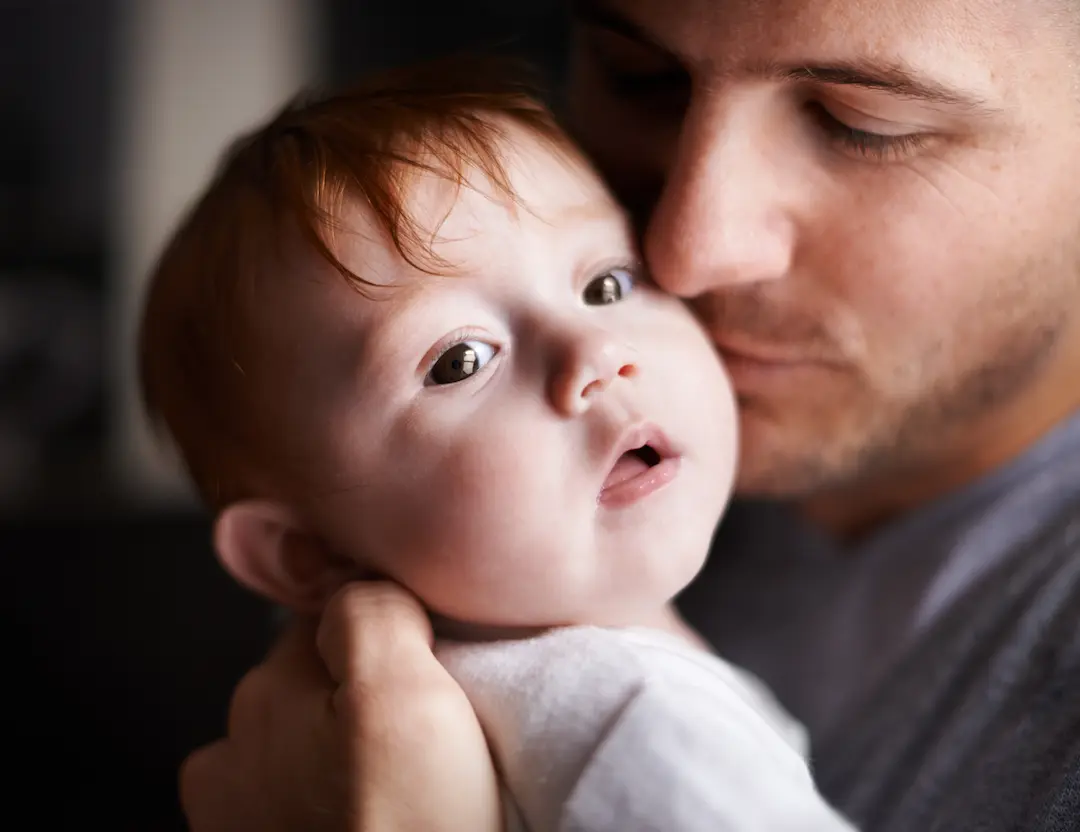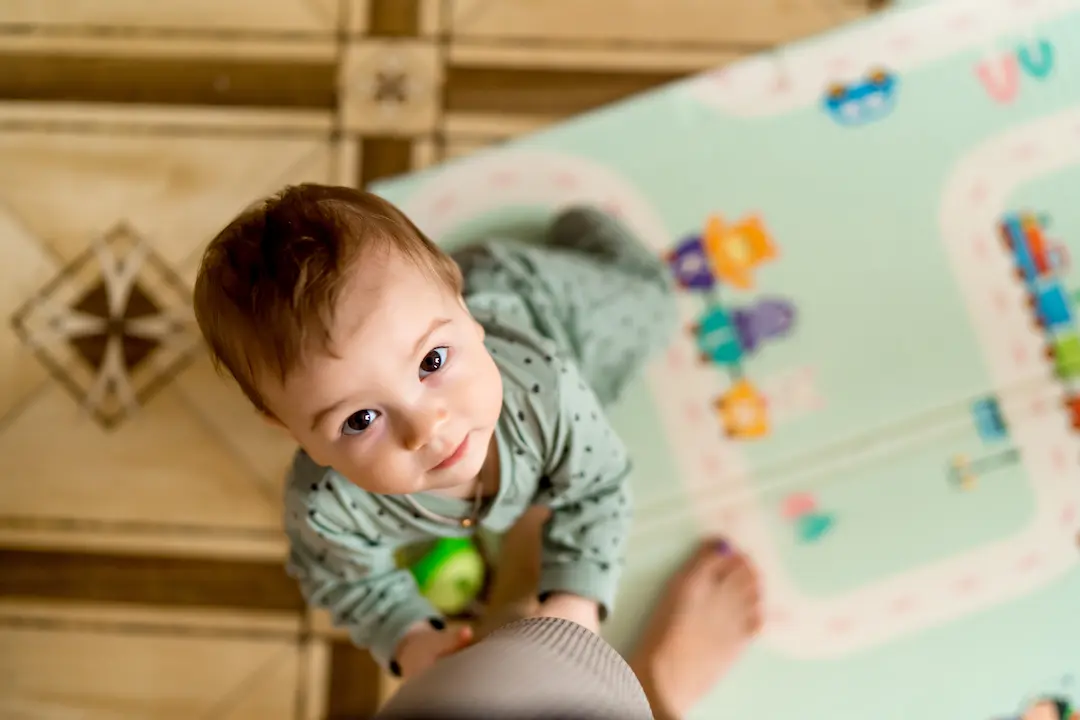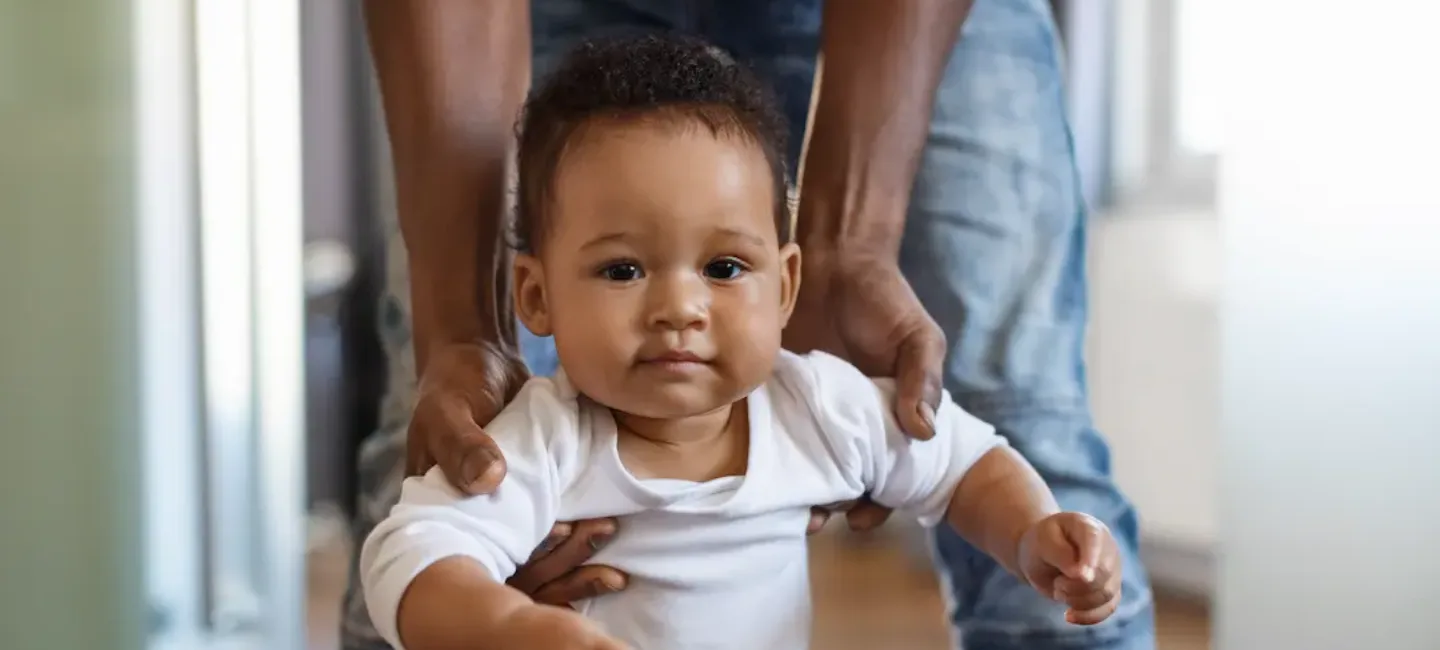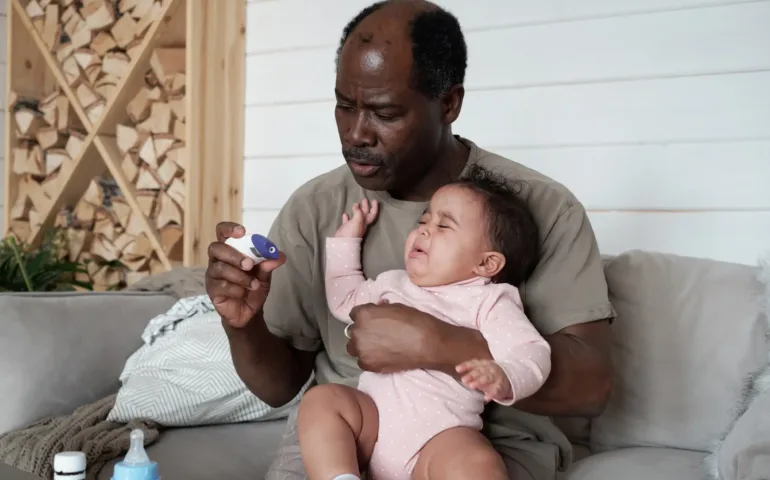
At 9 months old, your baby is fully exploring the world around them: what an adventure! What are the key learning milestones this month? How can you support their development? Motor skills, cognitive growth, and activities to try… Here’s an overview of your 9-month-old’s development.
Key developmental milestones at 9 months
Your baby is growing and continues to gain new skills every day. Here are the main milestones that may apply this month.
Motor skill milestones
At this age, your baby’s motor skills develop rapidly. This is typically when they begin to crawl, allowing them to discover their environment independently while developing coordination. Crawling requires the body’s two sides to work together, strengthening the connection between the brain’s two hemispheres.
Good to know: don’t worry if your child develops at a different pace. Some babies move straight from sitting up to standing and walking!
Your baby may also start to pull themselves up using furniture or your hands. This is an important step toward independent walking.
Finally, your baby’s ability to grasp objects improves thanks to the thumb-index grasp (or “pincer grip”), enabling them to handle small objects and explore their senses.
Cognitive development
Your baby’s cognitive development at 9 months is just as remarkable. At this stage, they begin to understand and interact more with their surroundings.
- Your baby can now recognize and remember objects, even when they are out of sight. This ability to understand object permanence is a key sign of cognitive growth.
- Play becomes more interactive. Your baby may enjoy simple games like peekaboo or stacking objects. These activities stimulate both their mind and fine motor skills.
- Although their language is not yet developed, your baby uses gestures to communicate their needs and emotions, such as waving goodbye or pointing at something they want.
Sleep at 9 months
Around 9 months, your child’s nighttime sleep structure changes: they now start their sleep cycles in light sleep and finish in REM sleep, the opposite of what they did before. This means your baby now falls asleep in calm sleep, just like you! More broadly, deep sleep occurs mainly at the beginning of the night, while REM sleep—also called active sleep—is more present in the early morning. This explains why your baby may wake up early and struggle to fall back asleep.
A sleep cycle now lasts 70 minutes. Your baby may wake up several times during the night, but they are able to fall back asleep on their own. At this age, most babies no longer need to eat at night: they have developed the ability to store enough energy to last until morning.
To fall asleep, your child needs to feel safe. If you haven’t already, introduce a bedtime routine. It may seem trivial, but it’s not at all! A routine has a real impact on falling asleep, both now and as your child grows: it provides predictable cues and comforting markers that help your child transition into sleep. Doing the same actions, in the same order, in the same place every night creates comforting routines for your baby.

How to stimulate your baby’s development at 9 months?
To encourage them to handle objects and explore their senses, stacking, nesting, and shaking toys are perfectly suited:
- Discovery bottles: fill clear plastic bottles with different materials like colored rice, water beads, or glitter. By shaking the bottles, your baby will discover new textures and sounds.
- Pouring games: give your baby bowls and spoons to pour water or sand. These activities help develop fine motor skills and an understanding of “inside” and “outside.”
- Activity boards: offer boards with elements to screw, unscrew, open, and close. These games stimulate coordination and curiosity.
And also:
- Wooden blocks,
- drums, maracas, xylophones…
- Stacking cups, shape sorters and rings.
- Tactile books, musical books, or lift-the-flap books.
In conclusion, at 9 months, your baby is busy discovering the world, starting to crawl and grasp more objects. To encourage them to handle things, you can choose stacking, nesting, pouring, or shaking toys.
Want to learn more? Feel free to download the May app, where you’ll find plenty of resources to support and guide you throughout your journey as a new parent.

**
Photos: YuriArcursPeopleimages | Prostock-studio | tatevik_b
This text was translated from French by an artificial intelligence. The information, advice, and sources it contains comply with French standards and may therefore not apply to your situation. Make sure to complement this reading by visiting the May US/UK app and consulting the healthcare professionals who are supporting you.




